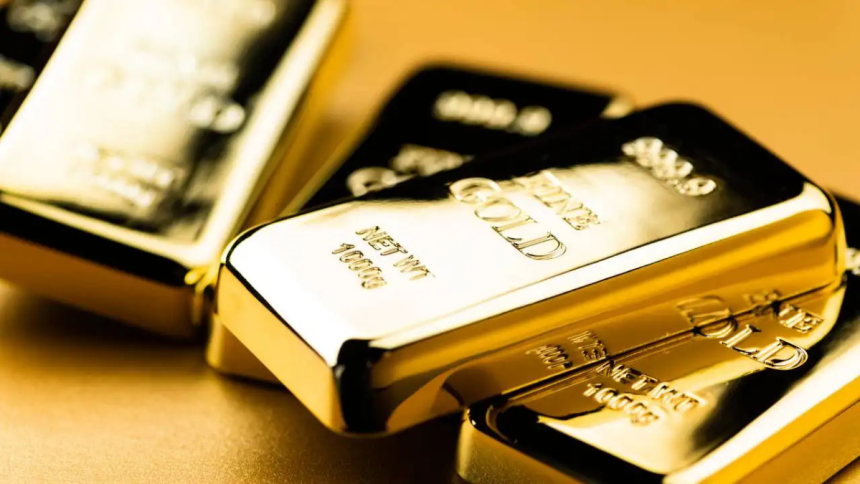Understanding Precious Metals IRAs
Precious Metals IRAs allow individuals to invest in physical metals within a tax-advantaged retirement account. These accounts offer a way to diversify portfolios while protecting against economic volatility.
What Are Precious Metals IRAs?
Precious Metals IRAs are self-directed IRAs specifically designed to hold physical precious metals like gold, silver, platinum, and palladium. Unlike traditional IRAs, these accounts let investors directly own tangible assets instead of paper-based investments like stocks or bonds. Internal Revenue Service (IRS) regulations require that metals meet specific purity standards and be stored in approved depositories to maintain compliance.
Investors typically choose Precious Metals IRAs to hedge against inflation, market instability, and currency devaluation. The self-directed nature of these accounts also provides greater control over investment choices, appealing to those who seek non-traditional investment opportunities.
Types Of Precious Metals Eligible For Investment
The IRS permits gold, silver, platinum, and palladium that meet minimum fineness requirements for IRA inclusion. For example, gold must have a purity of at least 99.5%, silver 99.9%, platinum 99.95%, and palladium 99.95%. Coins, rounds, and bars meeting these criteria must also originate from accredited manufacturers or mints.
Common eligible items include American Gold Eagles, Canadian Maple Leafs, and PAMP Suisse gold bars. However, collectible or numismatic coins and metals that don’t meet purity standards or originate from uncertified facilities are not allowed. Accurate adherence to eligibility guidelines ensures the IRA’s tax-advantaged status remains intact.
Advantages Of An IRA In Precious Metals
An IRA in precious metals offers distinct benefits that extend beyond traditional investment strategies. These advantages focus on diversification, inflation protection, value preservation, and tax implications.
Portfolio Diversification
Incorporating precious metals into an IRA diversifies investment portfolios by expanding asset classes. Unlike stocks or bonds, metals like gold and silver often move inversely to market trends. This reduces overall risk and enhances stability by balancing gains and losses within the portfolio.
Hedge Against Inflation And Economic Instability
Precious metals within an IRA act as a hedge during periods of inflation or economic downturns. As currencies decline in value, assets like gold and silver tend to retain or increase their worth. This characteristic protects purchasing power and shields retirement savings against monetary depreciation.
Long-Term Store Of Value
Precious metals serve as a reliable store of value over extended periods. Unlike fiat currencies, which face the risk of devaluation, metals retain intrinsic worth due to their finite supply and widespread demand. This ensures IRA investments maintain value across generations.
Potential For Tax Advantages
Precious Metals IRAs offer tax advantages based on the account type. Traditional IRAs provide tax-deferred growth, while Roth IRAs allow for tax-free withdrawals during retirement if eligibility criteria are met. These tax structures optimize returns and provide flexibility for financial planning.
Key Considerations For Investing In A Precious Metals IRA
Investing in a Precious Metals IRA can strengthen retirement portfolios, but essential factors must be evaluated. Proper planning ensures compliance, protection, and cost-effectiveness.
Storage And Security
Secure storage is critical for physical precious metals. The IRS requires the metals to be stored in an approved depository rather than personally held. These depositories use advanced security measures, including 24/7 surveillance, access controls, and insured vaults, to protect assets. Investors should confirm that their chosen custodian partners with certified storage facilities and provides regular asset reports. Neglecting secure storage can lead to penalties or loss of IRA status.
IRS Regulations And Compliance
Strict IRS regulations govern Precious Metals IRAs. Eligible metals must meet purity thresholds, such as 99.5% for gold and 99.9% for silver. All purchases must come from accredited manufacturers and comply with IRS standards to avoid disqualification. Additionally, collectible coins, jewelry, and non-approved metals are prohibited. Ensuring meticulous compliance by working with knowledgeable custodians helps maintain the tax advantages and legality of the IRA.
Costs And Fees To Be Aware Of
Costs for Precious Metals IRAs include setup fees, storage charges, annual maintenance fees, and transaction expenses. Custodians typically charge account setup fees ranging from $50 to $200. Storage fees vary based on the depository but generally cost $150 to $300 annually, depending on account size and storage type. Transaction costs include markups on metal purchases or sales. Assessing and comparing these fees across providers helps minimize costs while maximizing returns.
Tips For Getting Started With A Precious Metals IRA
Getting started with a Precious Metals IRA involves careful planning and informed decision-making. Following specific steps can help investors maximize benefits and secure their financial future. Step one is to get a free gold investing kit. From there, you’ll be able to decide which company you wish to work with. Then, follow the steps below.
Choosing A Reliable Custodian
Selecting an experienced custodian is essential for managing a Precious Metals IRA. Custodians oversee account administration, compliance, and secure storage arrangements. Investors should verify that a custodian is approved by the IRS and has strong partnerships with accredited depositories. Key factors to evaluate include the custodian’s fees, reputation in the industry, and level of customer support. Independent reviews and industry certifications offer insights into their credibility.
Evaluating Precious Metals Options
Choosing the right metals impacts the IRA’s performance and diversification. The IRS only allows approved metals like gold (99.5% purity), silver (99.9%), platinum (99.95%), and palladium (99.95%). Eligible examples include American Gold Eagles and South African Krugerrands. Investors should prioritize metals that align with long-term goals, considering current market trends, rarity, and historical performance. Working with a knowledgeable custodian or trusted financial advisor ensures informed decisions.
Monitoring Your Investment
Consistent monitoring helps maintain the IRA’s growth potential and risk management. Investors should regularly review account statements, track the market value of their metals, and stay updated on economic conditions that may influence their IRA’s performance. Reliable custodians often provide tools and resources for effective tracking. Adjustments, like reallocating holdings or adding new metals, may optimize portfolio stability in response to market changes.
To learn more about this process, visit https://www.irainpreciousmetals.com/.
Conclusion
An IRA in precious metals offers a unique opportunity to secure financial stability while navigating the uncertainties of traditional markets. By combining the intrinsic value of metals with the tax advantages of an IRA, investors can create a robust strategy for wealth preservation and growth.
With proper planning, adherence to IRS regulations, and careful selection of custodians and storage solutions, individuals can unlock the full potential of a Precious Metals IRA. This approach not only diversifies portfolios but also provides a reliable hedge against inflation and economic volatility, ensuring long-term financial security.
Lynn Martelli is an editor at Readability. She received her MFA in Creative Writing from Antioch University and has worked as an editor for over 10 years. Lynn has edited a wide variety of books, including fiction, non-fiction, memoirs, and more. In her free time, Lynn enjoys reading, writing, and spending time with her family and friends.















